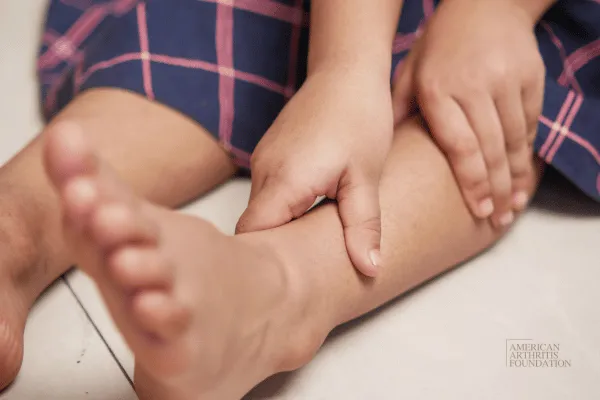About Arthritis
As the nation’s #1 cause of disability, arthritis affects nearly 60 million adults and 300,000 children. Over 100 types of arthritis and related conditions damage the joints and often other organs.
How can we assist you?
Helpful Tools for You

Could Biomarkers Be the Key to Better Juvenile Arthritis Treatment?
When it comes to treating juvenile idiopathic arthritis (JIA), especially the polyarticular course (pJIA), predicting how well a patient will respond to treatment is crucial. A recent study has shed light on how specific protein levels, S100A8/9 and S100A12, may play a significant role in determining treatment success with abatacept—a commonly prescribed medication for JIA.
But what does this mean for patients and families navigating the challenges of juvenile arthritis?
Unlocking the Role of S100 Proteins in JIA
S100 proteins, specifically S100A8/9 and S100A12, are a group of proteins released at sites of inflammation. In children with JIA, inflammation is a major player that drives joint pain and swelling. These proteins act as indicators of how much inflammation is present. What's groundbreaking about this study is that it suggests these proteins could help predict how well a child might respond to abatacept, a treatment used to control symptoms of pJIA.
The research team from Cincinnati Children’s Hospital, led by Dr. Hermine I. Brunner, discovered that lower levels of these S100 proteins at the beginning of treatment were linked to greater improvement in disease activity over time. This is a significant finding because it means that these protein levels could help doctors tailor treatment to each individual child more effectively.
The Study at a Glance
The study, published in Arthritis Research & Therapy, analyzed data from an international trial involving 219 children with active polyarticular JIA. The researchers measured baseline levels of S100A8/9 and S100A12 proteins in the patients’ blood before starting abatacept treatment.
They found that children with lower baseline levels of S100A8/9 were 2.54 times more likely to experience a 90% improvement in disease symptoms after four months of treatment. Similarly, those with lower S100A12 levels were 2.52 times more likely to reach the same level of improvement. Not only that, but these patients also showed a better chance of achieving complete disease inactivity after four months—results that held steady even after 16 months.
In other words, the lower the levels of these proteins at the start, the better the outcome.
A Step Towards Precision Medicine in Juvenile Arthritis
This study has the potential to shift the way we treat juvenile arthritis by adding an element of precision medicine. If doctors can measure a child’s S100 protein levels at the start of treatment, they may be able to predict how well that child will respond to abatacept. This could reduce the frustrating process of trial and error when it comes to selecting medications—giving children faster relief and better long-term results.
Dr. Brunner explained the significance of this research, saying, “Identifying patients with polyarticular JIA who may achieve early and greater clinical response with abatacept treatment could be a useful component of a precision medicine approach in pJIA.”
What This Means for Families
For families managing JIA, this research offers a ray of hope. Personalized treatment plans based on a child's unique biomarkers could mean fewer adjustments to medications, faster improvement, and a more direct path to managing the condition effectively.
While more research is needed to fully implement these findings in clinical settings, the potential to incorporate biomarkers into routine care could revolutionize how JIA is treated. With the help of these S100 proteins, we might be one step closer to giving every child with JIA the best possible outcome from their treatment.
At the American Arthritis Foundation, we are committed to supporting groundbreaking research that improves the lives of children living with juvenile arthritis. Stay connected with us for more updates on how these findings could shape the future of JIA treatment.
Sources: Brunner HI, et al. Arthritis Res Ther. 2024.
Effects of Arthritis

Cause of Disability
In the United States, 23% of all adults, or more than 54 million people, have arthritis. It is a leading cause of work disability, with annual costs for medical care and lost earnings of $303.5 billion.

Workforce Effects
Sixty percent of US adults with arthritis are of working age (18 to 64 years). Arthritis can limit the type of work they are able to do or keep them from working at all.

Global Impact
In fact, 8 million working-age adults report that their ability to work is limited because of their arthritis. For example, they may have a hard time climbing stairs or walking from a parking deck to their workplace.
Promoting Interventions That Reduce Arthritis Pain
American Arthritis Foundation recognizes several proven approaches to reduce arthritis symptoms:
Be active. Physical activity—such as walking, bicycling, and swimming—decreases arthritis pain and improves function, mood, and quality of life. Adults with arthritis should move more and sit less throughout the day. Getting at least 150 minutes of moderate-intensity physical activity each week is recommended.
Protect your joints. People can help prevent osteoarthritis by avoiding activities that are more likely to cause joint injuries.
Talk with a doctor. Recommendations from health care providers can motivate people to be physically active and join a self-management education program. Should your arthritis be interfering with your activities of daily living you may be a candidate to receive many new treatments, and learn how to reverse the arthritis condition.


